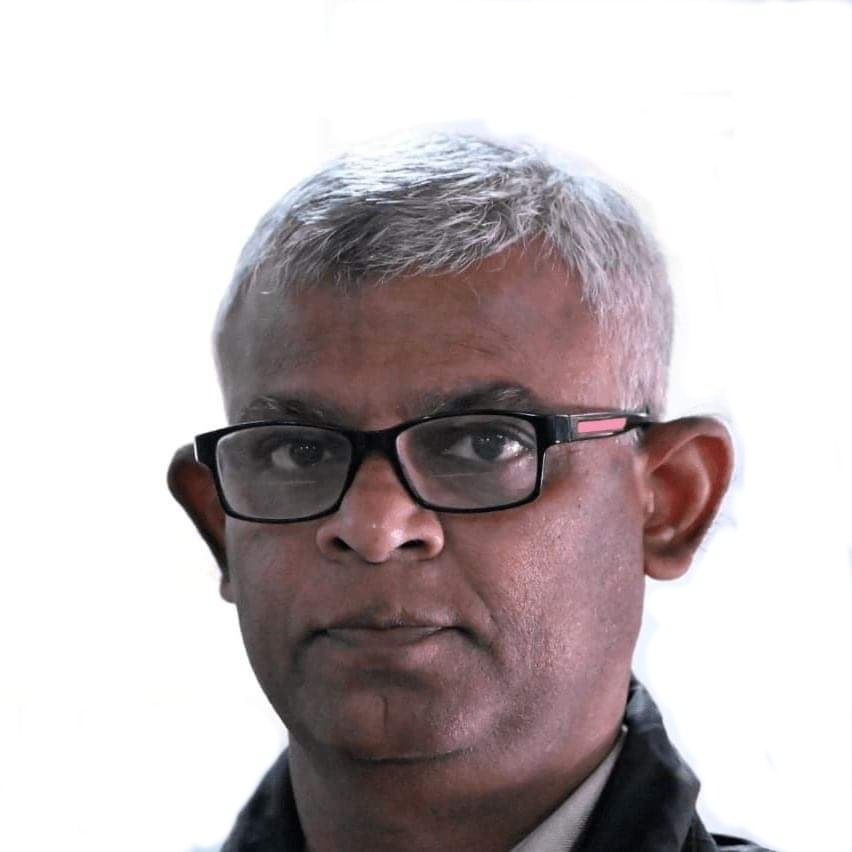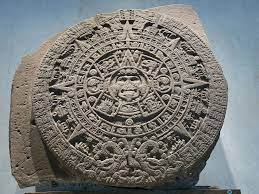Vikramaditya united all states under a common thread to counter continuous attacks by the Shakas and achieved an unprecedented victory by defeating them in their own land

Niraj Krishna
You will be surprised to know that in history, 10 days were missing from the calendars, leaving people astonished as to why these 10 days were erased from history. If you look at the calendar for October 1582, you will find that from October 4th to October 15th, a total of 10 days are missing. This was not a mistake but had a significant reason behind it.
We know that today, the Gregorian calendar is used worldwide, created in 1582 by Pope Gregory XIII. Before this, the Julian calendar, named after Julius Caesar, was in use. Since the Julian calendar followed the sun’s movement, every year the calendar lagged behind by 11 minutes and 30 seconds, accumulating to a delay of 10 days by the 16th century. To rectify this discrepancy, the Gregorian calendar was introduced, and October 1582 was adjusted by skipping the dates from the 4th to the 15th.
There was also a case in history when 11 days were omitted. If we look at September 1752 in the Julian calendar, you will find 11 missing days, meaning September 2, 1752, is directly followed by September 14, 1752. Although there was a shortage of 11 days in September 1752, all employees were paid their full monthly salary. This led to the concept of “paid holiday.” Due to its accuracy, the Gregorian calendar gained more acceptance.
In practice, we celebrate New Year on January 1st. However, according to the Indian or Hindu calendar, the new year begins with Chaitra Shukla Pratipada, which corresponds to the third week of March in the English month. All Indian lunar calendars, including Vikram Samvat, are based on the movements of the sun and the moon. In one way or another, almost all calendars around the world seem to follow the Indian Panchang.
The most ancient Panchang of India is considered Saptarshi Samvat, created in the sixth century BCE. However, the most popular and current calendar in use is Vikram Samvat, known as the Hindu calendar. According to Hindu beliefs, when Lord Brahma started the creation of the universe, the first day of our world was considered that day. This is why this day holds great significance in Hinduism, and the Hindu year is considered to begin from this day.
While Hindus celebrate the Hindu New Year, they do not prefer to associate it with the name of the Rajput emperor Vikramaditya Paramara. Even though they shout “Vikram Samvat,” they do not call it Hindu New Year; it is the Indian New Year. It is called Vikram Samvat, but the name of Vikramaditya is omitted, and it is known as the Hindu New Year. Vikramaditya, by defeating the Shakas and establishing his rule, initiated the Vikram Samvat to mark his victory over the Shaka era.
The Hindu New Year is also celebrated according to Vikram Samvat. The inception of the Hindu calendar was done by the great ruler Veer Vikramaditya. Almost two thousand years ago, Vikramaditya united all states under a common thread to counter continuous attacks by the Shakas and achieved an unprecedented victory by defeating them in their own land, Arabia, in the year 57 BCE. In this calendar, twelve months in a year and seven days in a week were established.
The calendar or Panchang was born to measure the day, night, and months. Different countries devised their calendars in different ways because at the same time, the weather and the duration of day and night vary in different parts of the Earth. Within our vast country, approximately fifty types of calendars are prevalent.
The concept of the calendar in Chinese and Greek civilizations meant shouting. In ancient times, an individual would announce or declare which date, festival, or fast would occur the next day. This shouting person gave rise to the term “Date Hu Calendar.” In the Latin language, the calendar was considered a day for accounting.
In India, various types of New Year are celebrated, with Vikram Samvat, Christian Era (AD), Shaka Samvat, and Hijri Samvat being the prominent ones. The dates of the Christian Era and Shaka Samvat are broadcast on the radio. It’s remarkable that after independence, the Christian Era and Shaka Samvat were adopted. Vikram Samvat is significant in Indian culture, and Hijri Samvat is important in Islamic countries. Vikram Samvat is more scientific and authentic. In the Christian Era, some months have 31 days, some have 30 days, and February has 28 days, with an additional day every four years. In Vikram Samvat, each month has 30 days. Vikram Samvat is also more ancient; it is 57 years ahead of the Christian Era. A fiscal year is also considered, which is from April 1 to March 31. Some people create new account books on Diwali and start the New Year from the first day of Kartik month. Business people perform the worship of their new account books on Diwali. Educational institutions mostly begin a new academic session from July.
The beginning of Vikram Samvat was in 57 BC. On this day, Emperor Vikramaditya established his kingdom. The Vikrami Samvat is named after him. Thus, in 2024 CE, it will be Vikram Samvat 2081. Within Vikram Samvat, the first month is Chaitra Shukla Ekam or Pratipada, and the last month is Phalguna. Vikram Samvat is 57 years ahead of the English calendar. From March, 2024, the Vikram Samvat 2081 will start from Chaitra Shukla Pratipada. According to Vikram Samvat, the months are generally as follows: Chaitra in March-April, Vaishakha in April-May, Jyeshtha in May-June, Ashadha in June-July, Shravana in July-August, Bhadrapada in August-September, Ashvayuja in September-October, Kartika in October-November, Margashira in November-December, Pousha in December-January, Magha in January-February, and Phalguna in February-March. Diwali and Dussehra fall in the month of Kartik, Rakhi in the month of Shravana, and Holi is celebrated in Phalguna.
The first day of Chaitra Pratipada holds special historical significance because according to Hindu tradition, on this day at sunrise, Lord Brahma created the universe. Emperor Vikramaditya also established his rule on this day, and the Vikram Samvat begins in his name. It is said to be the day of the coronation of Lord Rama. Chaitra Pratipada is also the first day of the nine-day Navaratri festival, a symbol of power and devotion. Yudhishthira’s coronation also took place on this day. The second Guru of the Sikhs, Sri Angad Dev Ji, was also born on Chaitra Pratipada. On this day, Swami Dayanand Saraswati founded the Arya Samaj and gave the message of “Krinvanto Vishwamaryam” (Make the world noble). The descent of the revered saint Jhulelal Ji, the protector of the Sindhi community, also happened on this day. Like Emperor Vikramaditya, Shalivahana chose this day to defeat the Huns and establish the best kingdom in South India.
In the Gregorian or English calendar, the first month of the year is January, and the last month is December. The Gregorian or English calendar is prevalent in most countries. In many countries, the New Year is welcomed with great enthusiasm and joy on January 1. Christmas is also celebrated on December 25.
Shak Samvat: The decision to create the national calendar of Shak Samvat was made on March 22, 1957. The rationale for adopting Shak Samvat as the national calendar was based on its mention in ancient inscriptions. It is believed that Shak Samvat began during the reign of King Kushan Kanishka around 78 CE. Within this calendar, the first month is Chaitra, starting with Shukla Ekam or Pratipada, and the last month is Phalguna. Shak Samvat is 78 years behind the Gregorian or English calendar, so in the year 2023 CE, Shak Samvat is 1945 (2023-78).
Hijri Calendar: The Islamic or Hijri calendar commenced on July 16, 622 CE. Notably, this calendar does not adjust for the decreasing speed of the moon, causing its months to fall approximately 10 days behind each year. The name “Hijri” is derived from the migration (Hijrat) of Prophet Muhammad from Mecca to Medina in the same year. The Hijri calendar consists of 12 months, and a new month begins after 29 or 30 days, resulting in a total of 354 days in a year.
Month Names: The months in the Hijri calendar are Muharram, Safar, Rabi’ al-Awwal, Rabi’ al-Thani, Jumada al-Ula, Jumada al-Thani, Rajab, Sha’ban, Ramadan, Shawwal, Dhu al-Qi’dah, and Dhu al-Hijjah. The month of Muharram is significant as it commemorates the martyrdom of Imam Hussein and his companions in a battle against falsehood.
Vikram Samvat: Vikram Samvat was the first calendar adopted by the post-independence parliamentarians as a symbol of independence. However, due to the influence of the top leaders of that time, Shak Samvat and the English calendar were also imposed. Shakas and Huns were invaders, and King Vikramaditya defeated the Shakas, hence he is called ‘Shakarim’ or the enemy of the Shakas. Historians were misled by the rulers in power. The glory of Indian culture, represented by Vikram Samvat, was never given due importance by subsequent rulers. The current central power continues to favor the English and Shak Samvat. To strengthen national unity and promote national pride, Vikram Samvat should be declared as the national calendar on the occasion of the auspicious signs of Vikram Samvat 2081, the centenary of independence, and the dawn of the new India. Rejecting Shak Samvat and the Christian era, which are less scientific, less authentic, and less ancient, is essential. Vikram Samvat 2080 should bring prosperity to the entire nation. It is not just a wish but a strong belief.
The distortion and manipulation of Indian history, the promotion of falsehood, and the sidelining of patriotism and love for the country have been done to a great extent. To uplift the distorted culture, which is referred to by various names like ‘Ganga-Jamuni’ or ‘Satrangi,’ Vikram Samvat should be linked to India’s golden future. Vikram Samvat should be embraced as a national calendar, focusing not only on uniformity but also on the growth of the nation’s pride. Vikram Samvat, as opposed to Shak Samvat and the Christian era, is a well-established and contemporary example. According to the tradition of Indian culture after independence, Vikram Samvat should have been given importance, but it was not.


